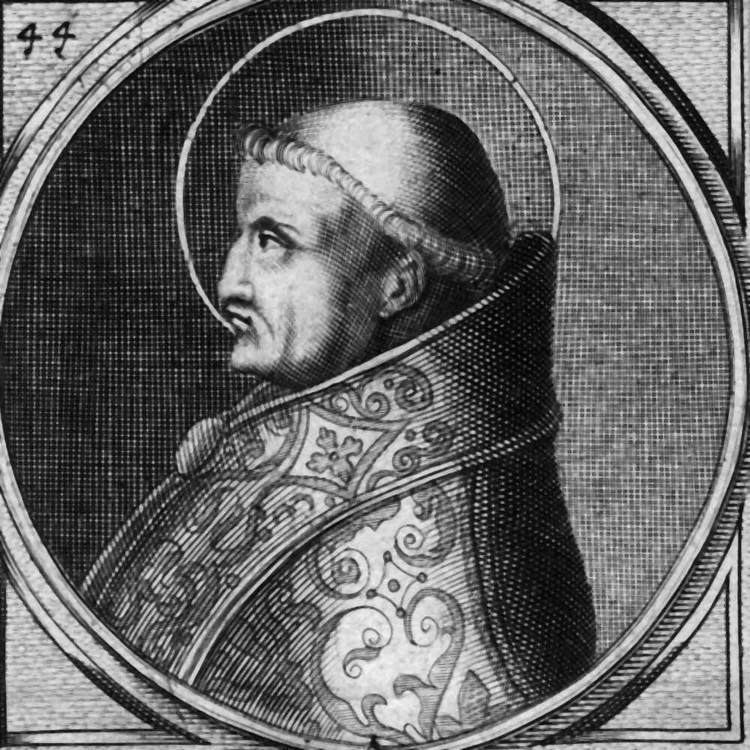Papacy began 10 September 422 Name Pope I Posthumous style Saint Attributes DoveDragonFlame | Birth name Celestine Papacy ended 26 July 432 Parents Priscus | |
 | ||
Venerated in Roman Catholic ChurchGreek Orthodox Church Similar People Pope Sixtus III, Pope Anastasius I, Pope Innocent I, Pope Pius I, Pope Felix III | ||
അനുദിന വിശുദ്ധർ (Saint of the Day) April 6th - St Celestine Ist
Pope Celestine I (Latin: Caelestinus I; d. 1 August 432) was Pope from 10 September 422 to his death in 432. According to the Liber Pontificalis, the start of his papacy was 3 November. However, Tillemont places the date at 10 September.
Contents
- Saint of the Day April 6th St Celestine Ist
- SAINT OF THE DAY April 6 StPope Celestine 432 Episode 106 Produced by AMC
- Biography
- References

Celestine's tenure was largely spent combatting various ideologies deemed heretical. He supported the mission of the Gallic bishops that sent Germanus of Auxerre in 429, to Britain to address Pelagianism, and later commissioned Palladius as bishop to the Scots of Ireland and northern Britain. In 430, he held a synod in Rome which condemned the apparent views of Nestorius. He also opposed the Novationists who refused absolution to the lapsi, arguing that reconciliation should never be refused to any dying sinner who sincerely asked it.
SAINT OF THE DAY - April 6 - St.Pope Celestine (+432) - Episode 106 - Produced by AMC
Biography
Celestine I was a Roman from the region of Campania. Nothing is known of his early history except that his father's name was Priscus. According to John Gilmary Shea, Celestine was a relative of the emperor Valentinian. He is said to have lived for a time at Milan with St. Ambrose. The first known record of him is in a document of Pope Innocent I from the year 416, where he is spoken of as "Celestine the Deacon".
Various portions of the liturgy are attributed to him, but without any certainty on the subject. In 430, he held a synod in Rome, at which the teachings of Nestorius were condemned. The following year, he sent delegates to the First Council of Ephesus, which addressed the same issue. Four letters written by him on that occasion, all dated 15 March 431, together with a few others, to the African bishops, to those of Illyria, of Thessalonica, and of Narbonne, are extant in re-translations from the Greek; the Latin originals having been lost.
St. Celestine actively condemned the Pelagians and was zealous for Roman orthodoxy. To this end he was involved in the initiative of the Gallic bishops to send Germanus of Auxerre and Lupus of Troyes travelling to Britain in 429 to confront bishops reportedly holding Pelagian views.
He sent Palladius to Ireland to serve as a bishop in 431. Bishop Patricius (Saint Patrick) continued this missionary work. Pope Celestine strongly opposed the Novatians in Rome; as Socrates Scholasticus writes, "this Celestinus took away the churches from the Novatians at Rome also, and obliged Rusticula their bishop to hold his meetings secretly in private houses." He was zealous in refusing to tolerate the smallest innovation on the constitutions of his predecessors. As St. Vincent of Lerins reported in 434:
Holy Pope Celestine also expresses himself in like manner and to the same effect. For in the Epistle which he wrote to the priests of Gaul, charging them with connivance with error, in that by their silence they failed in their duty to the ancient faith, and allowed profane novelties to spring up, he says: "We are deservedly to blame if we encourage error by silence. Therefore rebuke these people. Restrain their liberty of preaching."In a letter to certain bishops of Gaul, dated 428, St. Celestine rebukes the adoption of special clerical garb by the clergy. He wrote: "We [the bishops and clergy] should be distinguished from the common people [plebe] by our learning, not by our clothes; by our conduct, not by our dress; by cleanness of mind, not by the care we spend upon our person"
St. Celestine died on 26 July 432. He was buried in the cemetery of St. Priscilla in the Via Salaria, but his body, subsequently moved, now lies in the Basilica di Santa Prassede.
In art, Saint Celestine is portrayed as a Pope with a dove, dragon, and flame, and is recognized by the Church as a saint.
